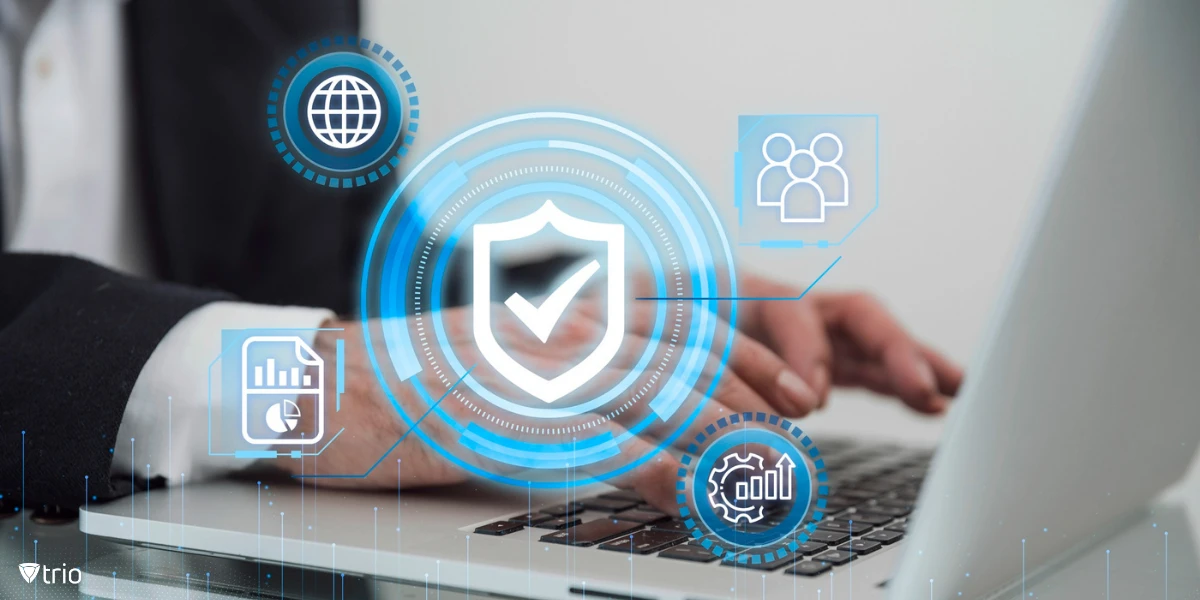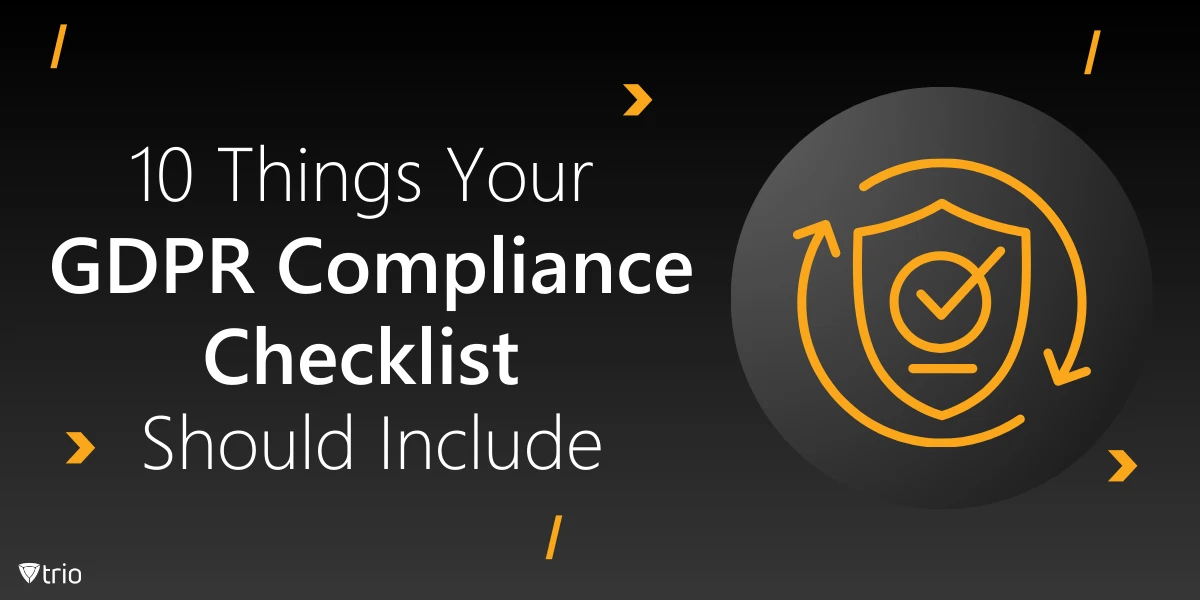The General Data Protection Regulation (GDPR) came into effect in May 2018, reshaping how businesses handle and protect personal data across the European Union (EU). Designed to give individuals greater control over their personal information, GDPR introduced stringent requirements for organizations operating within the EU and those that handle EU residents’ data, regardless of the business’s location.
Non-compliance with GDPR can lead to severe penalties, including fines of up to €20 million or 4% of annual global turnover, whichever is higher. To avoid these penalties and protect customer trust, businesses must establish a robust IT compliance strategy. This blog presents a detailed GDPR compliance checklist to help you ensure that your organization meets all regulatory requirements.
1. Understand the Scope of GDPR
Before implementing a compliance strategy, it is essential to understand who is subject to GDPR. GDPR compliance criteria includes::
- All organizations operating within the EU
- Non-EU businesses offering goods or services to EU residents or monitoring their behavior
- Controllers and processors that handle personal data, including subcontractors
The regulation defines personal data broadly, including any information that can directly or indirectly identify an individual, such as names, email addresses, phone numbers, IP addresses, and even cookies.
Ensure that your organization is aware of whether it processes personal data of EU residents and that it has measures in place for compliance.
2. Assign a Data Protection Officer (DPO)
One of the key GDPR requirements is the appointment of a Data Protection Officer (DPO) in specific circumstances:
- If your organization processes large amounts of personal data
- If you process special categories of personal data (e.g., health data, race, religion)
- If your core activities involve regular and systematic monitoring of individuals
The DPO will be responsible for overseeing data protection strategy, monitoring compliance, and acting as a point of contact for supervisory authorities. If your business doesn’t need a full-time DPO, you can outsource this role to a data protection expert or third-party service.
3. Review Data Processing Activities
Organizations must assess and document their data processing activities according to GDPR principles. This process involves:
- Mapping data flows: Identify where personal data comes from, how it’s processed, where it’s stored, and with whom it is shared.
- Data retention: Review the length of time personal data is stored and establish policies for deleting or anonymizing data when it is no longer needed.
- Lawful basis for processing: Ensure that each data processing activity has a lawful basis under GDPR, such as consent, performance of a contract, legal obligation, or legitimate interest.
Maintain accurate records of processing activities, especially if your organization processes sensitive personal data, and be prepared to demonstrate compliance to regulatory authorities.
4. Obtain Valid Consent
Under GDPR, consent must be freely given, specific, informed, and unambiguous. This means:
- No pre-ticked boxes: Users must actively opt-in to data collection, and you cannot use pre-selected checkboxes.
- Granular consent: Consent requests should be separate from other terms and conditions and should clearly explain what data is being collected and for what purpose.
- Easy to withdraw: Users should be able to withdraw consent at any time, and it must be as easy to withdraw consent as it was to give it.
For businesses that rely on consent as the legal basis for data processing, it is crucial to review and update consent mechanisms to ensure compliance.

5. Establish Data Subject Rights Procedures
GDPR grants individuals enhanced rights over their personal data. To comply, organizations must have processes in place to respond to requests from data subjects within one month. These rights include:
- Right to access: Individuals have the right to access the personal data an organization holds about them.
- Right to rectification: Individuals can request the correction of inaccurate or incomplete data.
- Right to erasure (also known as the right to be forgotten): Individuals can request the deletion of their personal data in certain circumstances.
- Right to data portability: Individuals can request the transfer of their data to another service provider in a structured, commonly used format.
- Right to object: Individuals can object to processing activities, especially for direct marketing purposes.
Your organization must be equipped to handle these requests efficiently and within the stipulated time frame.
6. Implement Privacy by Design and Default
GDPR requires that organizations adopt privacy by design and privacy by default principles. This means that data protection measures should be incorporated into the design of systems and services from the outset, rather than as an afterthought. Steps include:
- Minimizing data collection: Only collect data that is necessary for specific purposes.
- Pseudonymization and encryption: Use encryption and pseudonymization techniques to protect personal data.
- Access controls: Limit access to personal data to only those who need it for their roles.
- Regular audits: Periodically audit data protection practices to identify and address vulnerabilities.
By designing processes with privacy in mind, your organization can reduce the risk of data breaches and non-compliance.
7. Ensure Third-Party Compliance
If your organization shares personal data with third-party vendors or service providers, it is essential to ensure they also comply with GDPR. Steps include:
- Data processing agreements: Ensure that your contracts with third parties include clauses that require them to adhere to GDPR’s data protection standards.
- Due diligence: Conduct due diligence to confirm that third parties have appropriate security measures in place to protect the data they process on your behalf.
The organization is ultimately responsible for the data it controls, so choosing GDPR-compliant partners is crucial.
8. Conduct Data Protection Impact Assessments (DPIAs)
A Data Protection Impact Assessment (DPIA) is required when data processing is likely to result in a high risk to the rights and freedoms of individuals. Examples include:
- Large-scale processing of sensitive data
- Systematic monitoring of public areas
- Processing data related to criminal offenses
A DPIA helps organizations identify potential privacy risks and implement measures to mitigate them. It is a proactive tool that demonstrates GDPR compliance.
9. Ensure Data Breach Notification Protocols
GDPR mandates that organizations report data breaches to the relevant supervisory authority within 72 hours of becoming aware of the breach. If the breach is likely to result in a high risk to individuals’ rights, those individuals must also be informed without undue delay.
To comply:
- Breach response plan: Develop and maintain a robust incident response plan that includes procedures for identifying, assessing, and reporting breaches.
- Employee training: Ensure employees understand the importance of promptly reporting data breaches and know how to follow the breach notification protocols.
Document all breaches, even those that do not require reporting, to demonstrate transparency and compliance.
10. Train Employees on GDPR
All employees who handle personal data should receive GDPR training to understand their roles and responsibilities in ensuring compliance. Training should cover topics such as:
- Data subject rights
- Consent requirements
- Data breach protocols
- Lawful basis for processing
Regular training helps employees stay informed about best practices and reduces the risk of accidental non-compliance.
Download Our Free GDPR Compliance Checklist
To help your business meet GDPR requirements, we’re offering a free, comprehensive GDPR compliance checklist. This checklist outlines the essential steps your organization must take to align with GDPR regulations, which apply to any company operating in the European Union (EU) or dealing with the personal data of EU residents. By following this checklist, you’ll be better prepared to safeguard your clients’ personal data, avoid severe penalties, and build a trustworthy brand that prioritizes data privacy. Download our GDPR compliance checklist today to get started on your path to GDPR adherence.
Conclusion
Achieving and maintaining GDPR compliance requires a proactive, comprehensive approach to data protection. By following this checklist and embedding privacy into your organizational culture, you can ensure that your business meets GDPR requirements and safeguards personal data effectively. Proper GDPR compliance not only avoids hefty fines but also builds trust with your customers and strengthens your overall security posture.
Trio’s Mobile Device Management solution simplifies complying to GDPR by helping businesses manage, secure, and monitor devices and data. Request a free trial today to see how Trio can support your compliance journey through compliance automation processes.
Know about news
in your inbox
Our newsletter is the perfect way to stay informed about the latest updates,
features, and news related to our mobile device management software.
Subscribe today to stay in the know and get the most out of your mobile
devices with our MDM solution app.
Recent Posts

Erase the Risk: Protect with Zero Standing Privileges
Learn how zero standing privileges eliminate persistent access rights, enhance data security and reduce the risk of unauthorized access.

Understanding Access Control Types in Cybersecurity w/ Examples
Thorough understanding of access control types & the knowledge to make informed decisions about implementing security measures in your organization.

Cloud Data Protection: Safeguarding Information in the Cloud
Learn essential strategies for robust cloud data protection, exploring tools, best practices, and policies that safeguard sensitive information.





